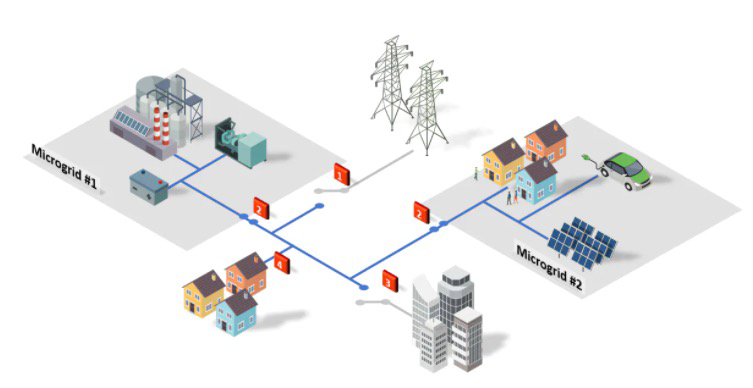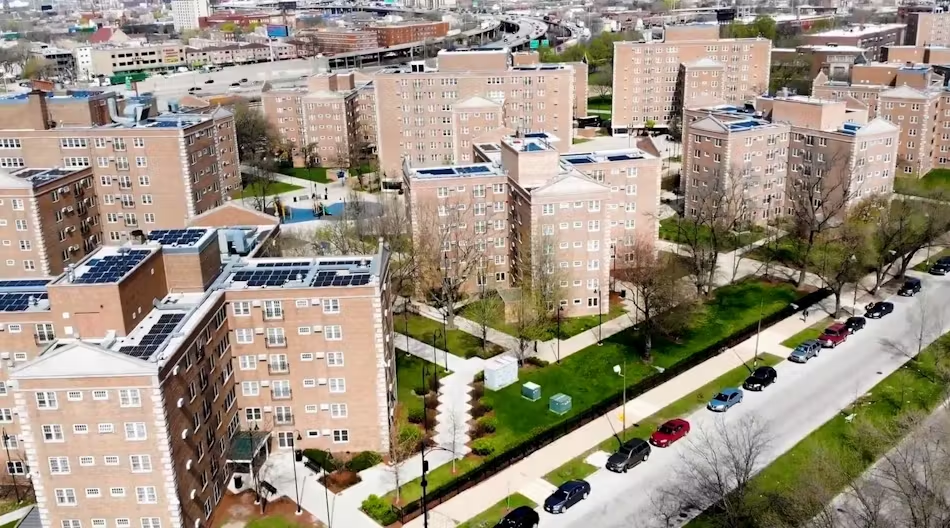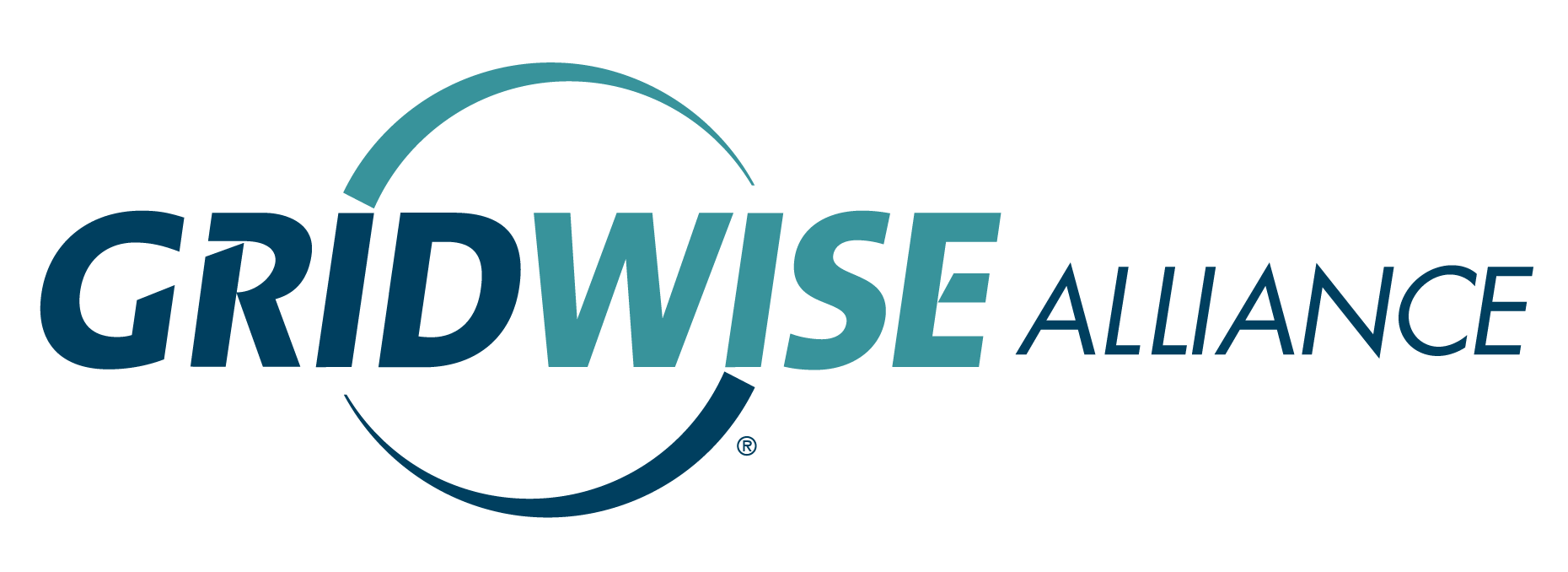Networked Microgrids
About this Technology
A microgrid refers to a connected set of electric loads, power generators, and control systems that can operate independent of the bulk power systems, and in some cases interconnect with it. Networked microgrids (NMG), sometimes called a microgrid cluster, refer to when two or more microgrids connect electrically through a primary or secondary distribution system, coordinating their controls systems.

Source. T&DWorld.
Use in the modern grid
As more DERs connect to the grid, NMGs can act as points of control aggregation. Additionally, the shared loads and generation resources, increase the likeliness that electric demand is met by their own internal resources. As a result, NMGs have the potential to increase operational flexibility for the broader grid, increase system resilience, and reduce costs when connected to either the distribution grid itself or independent microgrids.
Physical Location
NMGs could be located anywhere there are electric power systems, however details around system ownership and operation are dependent on the type of utility and existing state regulation. Depending on locat ion, NMG assets and the wired system may be owned fully or partially by either the utility or users and might be easier or harder to develop as a result.

Pilot Program
In 2018, Commonwealth Edison (ComEd) announced a two-phase NMG project. First, ComEd developed a new utility-owned microgrid in Bronzeville, Chicago before the second step of integrating it with an existing microgrid at the Illinois Institute of Technology. See this article for more information.
How mature is the technology?
Early stage development | While microgrids are more established, NMGs are a relatively new concept. Limited research and demonstration projects have occurred to date.
More Information
Explore these resources to learn more about NM.
